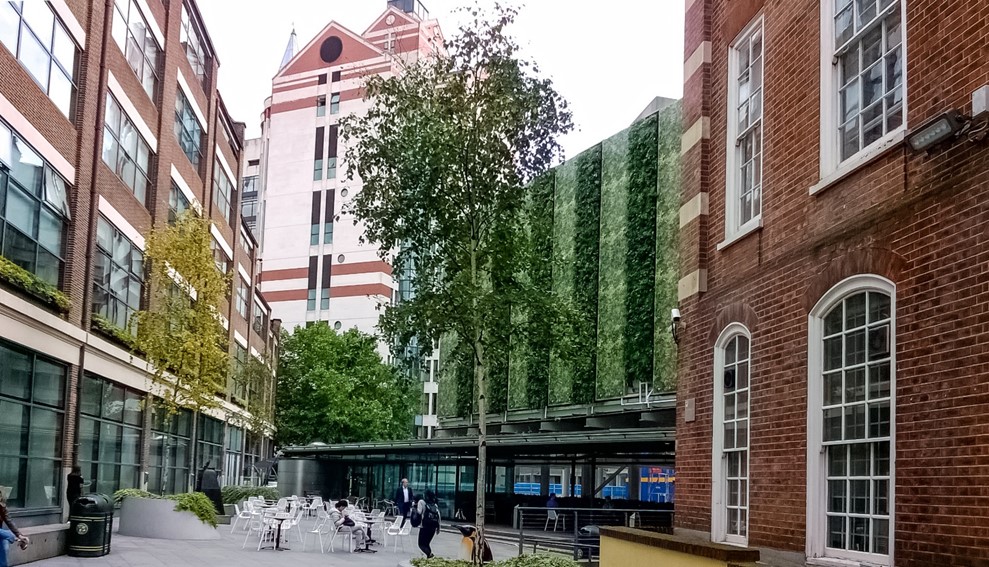To improve and enhance the standard and sustainability of our immediate environment on the LSE CBR project, a living wall was installed to the external face of the welfare cabins facing the LSE library and seating area of the John Watkins Plaza.
This was installed by fixing timber battens into the cabins and then hanging the planter boxes with plants onto them. The works were carried out in co-operation with ANS Global. Rainwater harvesting has also been incorporated to the system to reduce water usage.
Whilst working on a project in Central London, you are working in an area of higher pollution and lower air quality – the benefits of a living wall is to assist in counteracting this. By removing CO2 from the air and replace with O2 through photosynthesis, this helps to reduce the smog in the air around the project and helps to improve air quality at the same time.
Some of the challenges faced for the living wall was firstly planning how it would fit within the confines of the length of the wall and also how it would fit around all the cabling and pipework to the back of the wall and then how to run the irrigation system up to the living wall from the water supply inside to hoarding.
Now complete the wall fits in seamlessly with its surroundings and has attracted a lot of interest and great feedback. Westminster City Council have also given Mace some very positive comments during site meetings. The plants have also been sourced specifically as native species in line with the project’s BREEAM requirements with an objective to include the plants in the final design.
Did you find this article helpful?
Please rate this article

Loading...




